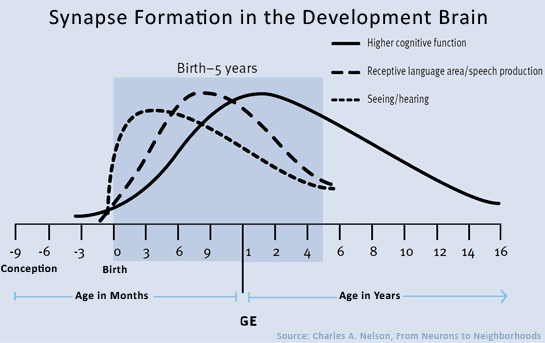This blog has been contributed by Meera Srinivasan, our resident expert on health and nutrition.
 Being a nutritionist I have always paid attention to what my family eats. But until recently, I was not aware that how they eat is equally important. Research has shown that eating together as a family is key to inculcating healthy eating habits in children.
Being a nutritionist I have always paid attention to what my family eats. But until recently, I was not aware that how they eat is equally important. Research has shown that eating together as a family is key to inculcating healthy eating habits in children.
Researchers at Rutgers University have looked at 68 studies that have examined relationship between family meals, eating habits and children’s health. Amazingly all studies pointed to a similar trend – families who had “meals together” during the growing years had children and teens who ate more fruits and vegetables, other nutrient rich foods and less of soft drinks. The research also indicated that they had a lower BMI (body mass index) than kids whose families did not eat together! Of course, this is not a magic bullet but with so many studies confirming this trend it will be good to pay attention to these findings.
So you may wonder about relevance in India – well the situation in urban households is no longer different, with both parents working long hours and juggling work and children’s schedules. Sitting down together for dinner in most homes is becoming increasingly rare and eating together has become a weekend activity and invariably not at home …
Along with healthier eating habits and lower instances of obesity, there are other significant benefits of family meals:
- Dinner together serves as an anchor for the family, nurtures the sense of belonging. It is a time for everyone to share and reflect about their day
- Conversations around meal time help increase children’s vocabulary making them better readers.
- Children actually do better in school/academics!
- Children become aware of current events and have better social skills. They learn to make conversations and also become good listeners!
- Teens who eat dinners at home regularly are less likely to smoke, drink alcohol or use drugs!
- As mentioned in the January 2013 issue of ParentEdge children learn by observing and experiencing and not by being instructed. If parents have healthy eating habits children tend to have similar eating habits!
How do we make it work?
- Meal time has to be a priority for everyone – make your family understand and once they start doing it, the benefits will ensure that there is no turning back!
- If dinner is not possible, explore breakfast and to start, target a minimum of three meals during the week.
- Make the meals interesting, get the family involved in menu planning and if possible even cooking. Many children these days are showing an interest in cooking and we can be thankful to the Master Chef programmes!
- Turn off mobiles, television during meals, so children understand you are making meal times a priority.
- Conversation starters can be as simple as “what was the best part of your day”, “what went well for you today and what did not?” – and before you realize children are talking and telling you things which may be difficult to get out from them otherwise!
At our home we have dinner together and I find this the most gratifying time of the day!
Re-published with permission from the blog of ParentEdge, a bi-monthly parenting magazine that aims to expose parents to global trends in learning and partner with them in the intellectual enrichment of their children.


 Early this year, Amy Chua, professor at Yale Law School, shot to fame – not for her legal prowess but because of a book she wrote. An excerpt of ‘Battle Hymn of the Tiger Mother’ published in the Wall Street Journal, ignited a global debate on pSo, is there some merit in Chua’s way of thinking? Can we say that one style of parenting is superior to another? Do the results justify the means? And most importantly, what is right for your child?generation Chinese immigrant, advocates that the Chinese style she practiced setting high performance expectations and imposing a strict regimen totally devoid of distractions and social interactions – yielded better outcomes than the laissez faire Western style.arenting. Chua, a second
Early this year, Amy Chua, professor at Yale Law School, shot to fame – not for her legal prowess but because of a book she wrote. An excerpt of ‘Battle Hymn of the Tiger Mother’ published in the Wall Street Journal, ignited a global debate on pSo, is there some merit in Chua’s way of thinking? Can we say that one style of parenting is superior to another? Do the results justify the means? And most importantly, what is right for your child?generation Chinese immigrant, advocates that the Chinese style she practiced setting high performance expectations and imposing a strict regimen totally devoid of distractions and social interactions – yielded better outcomes than the laissez faire Western style.arenting. Chua, a second

 If your older child is sleeping between you and dad as in the case of many Indian families, it becomes important to address the sleeping situation well before your due date arrives. This is important so that your older child does not feel displaced by the baby. So if you have plans to move your child to a different room, begin right away. If your older child must begin preschool, then ensure that it does not coincide with the arrival of the new baby. You certainly do not want your older child to associate being thrust in the care of someone else with his new sibling’s arrival.
If your older child is sleeping between you and dad as in the case of many Indian families, it becomes important to address the sleeping situation well before your due date arrives. This is important so that your older child does not feel displaced by the baby. So if you have plans to move your child to a different room, begin right away. If your older child must begin preschool, then ensure that it does not coincide with the arrival of the new baby. You certainly do not want your older child to associate being thrust in the care of someone else with his new sibling’s arrival. At this time, it is especially important to assure her that she can never be replaced and that the new baby is going to love her and look up to her more than anyone else. Assigning a protector kind of role to your older child is much better received than telling her that she is going to have someone to play with.
At this time, it is especially important to assure her that she can never be replaced and that the new baby is going to love her and look up to her more than anyone else. Assigning a protector kind of role to your older child is much better received than telling her that she is going to have someone to play with. When a baby learns to walk, it’s a big step towards being independent. Walking is a major developmental milestone for a baby and almost all mothers remember when their babies took their first steps. It’s interesting to note that most kids make those early steps on tiptoe.
When a baby learns to walk, it’s a big step towards being independent. Walking is a major developmental milestone for a baby and almost all mothers remember when their babies took their first steps. It’s interesting to note that most kids make those early steps on tiptoe. Sleep is crucial to a baby’s development. Newborn babies usually sleep for about 17 to 18 hours
Sleep is crucial to a baby’s development. Newborn babies usually sleep for about 17 to 18 hours 
